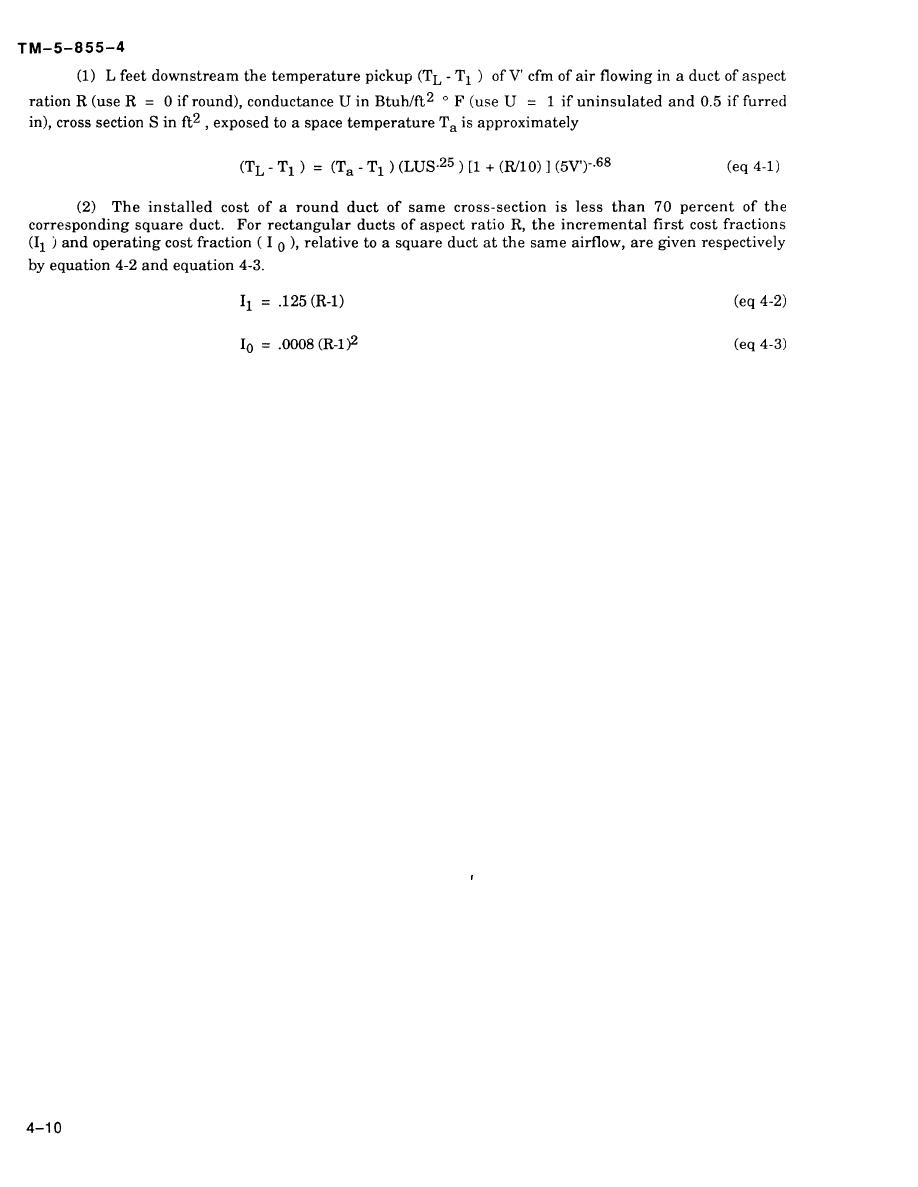
c. A low-velocity duct system using rectangular ductwork is practical in hardened industrial
facilities where space is of secondary importance. Fan horsepower increases approximately as the
square of the velocity and noise generation increases with the velocity; therefore, the velocity will be kept
low for quiet and economical operation. Standard ducts will be constructed in accordance with Sheet
Metal and Air Conditioning Contractor's National Association (SMACNA) Duct Construction
Standards.
d. A high-velocity duct system is often most practical in a facility where space is at a premium.
High-velocity systems have velocities in excess of 2,000 fpm and from 6 to 10 in. wg static pressures. The
design of a high-velocity system involves a compromise between reduced duct sizes and higher fan
horsepower. The reduced duct size and space requirements cut initial excavation costs but increased fan
power means higher operating costs. High-velocity ducts can be used anywhere in an air-conditioning
system as long as means are provided to control flow and attenuate sound at the air outlets. Ducts will be
constructed in accordance with SMACNA Duct Construction Standards.
4-8. Humidity control systems.
a. Criteria. The selection and application of humidification and dehumidification equipment
involves the evaluation and consideration of both the environmental criteria for the occupancy or process
and the characteristics of the facility enclosure. These may not always be compatible in an underground
structure and a compromise solution will be necessary.
b. Humidifiers.
(1) Process control and material storage humidity control conditions are usually specific and are
related to the control of moisture, rate of chemical or biochemical reactions, rate of crystallization,
product accuracy or uniformity, corrosion, and static electricity. Typical conditions of humidity for the
storage of certain materials may be found in table 2-3.
(2) Industrial humidifiers for central air-handling systems usually incorporate a heated water
pan or direct steam injection. Heated pan-type humidifiers offer a broad range of capacity and are
heated by an electric element or steam or hot water coil. Controls and maintenance of humidifiers
installed underground will conform to the standard practice for aboveground structures.
c. Dehumidifiers.
(1) Because of the difficulty of estimating accurately the total anticipated moisture loads, design
of the moisture-removal systems will provide for two types of installation. A permanent system will be
provided to handle loads imposed by the end-use requirements of the structure after the conversion
period. A temporary or semi-permanent system will be provided to handle excess loads during
conversion and to provide auxiliary capacities in case of breakdown.
(2) A mechanical dehumidifier consists of a refrigerating machine so arranged that air passes
through a cooling coil and then through the condenser. The air, first cooled and dehumidified by the
cooling coil, picks up the heat rejected by the condenser. In this process, moisture removed from the air by
the cooling coil is drained away as' a liquid but the air is reheated by the heat equivalent of the power
delivered to the machine. Machines of this type are very useful in spaces with considerable latent loads
and in which moderate heating is either desireable or of no consequence. They have an advantage over
chemical dehumidifiers in that the condensate is drained away as liquid through pipes, rather than
exhausted as vapor in the air through ducts.



 Previous Page
Previous Page
